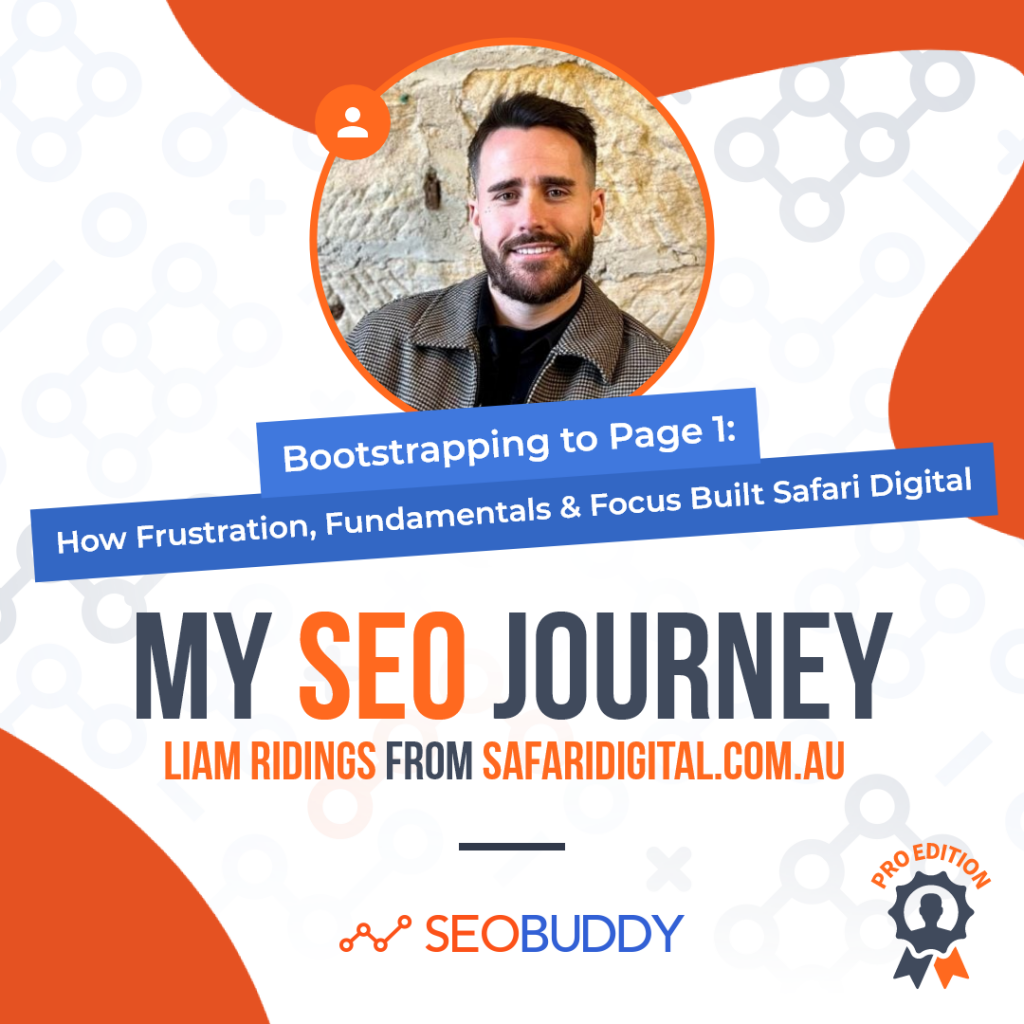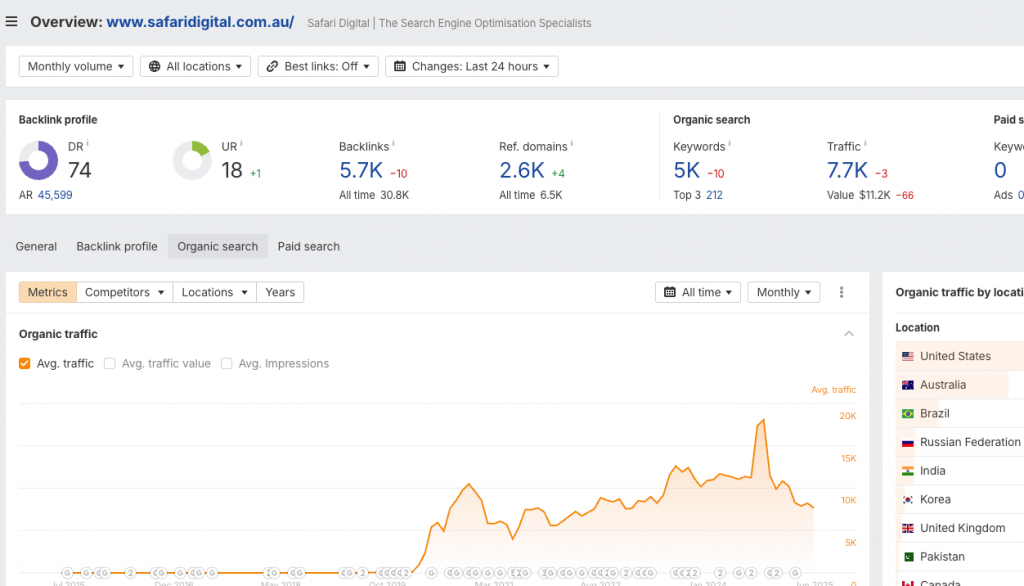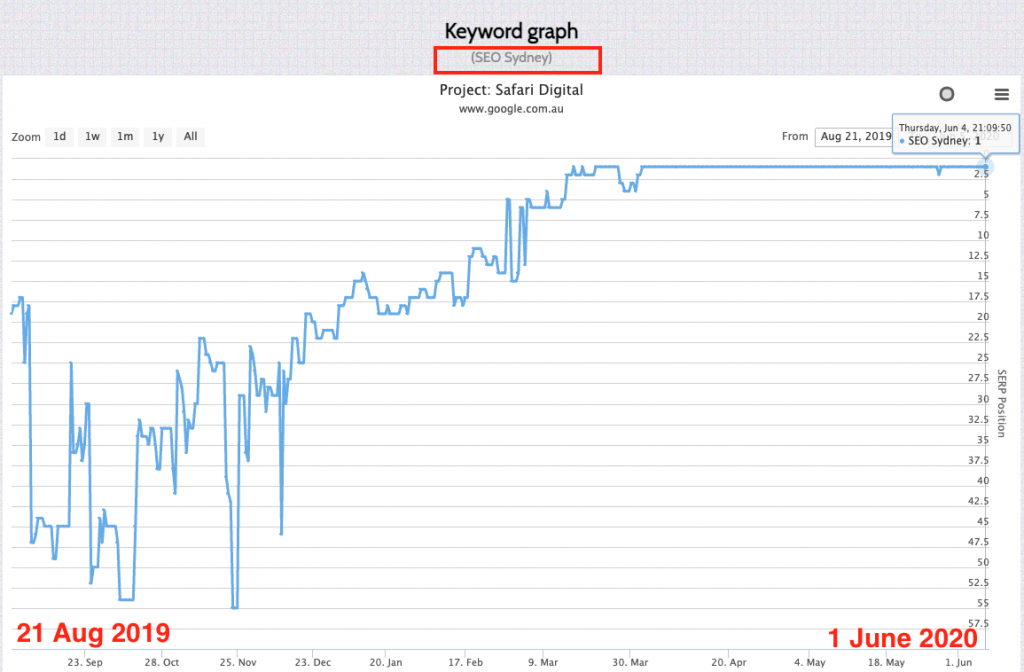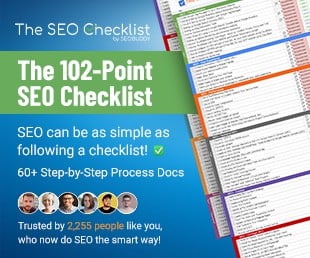My SEO Journey [Pro Edition]: Liam Ridings from safaridigital.com.au – Bootstrapping to Page 1: How Frustration, Fundamentals & Focus Built Safari Digital
My SEO Journey [PRO Edition] is a series where professionals in the SEO Industry, Digital Marketing, or Web Design share their honest SEO Journey filled with failure, success, and most importantly, proven results. Episode #166 features Liam Ridings from Safari Digital.

I’m Liam Ridings, founder and director of Safari Digital SEO Agency. I launched Safari Digital in 2019 while taking a 12-month sabbatical in Hamburg, Germany, stepping away from years of client-side SEO roles in Sydney. Learning the technical side of SEO and diving into off-site strategies was the real learning curve.

The Frustration That Sparked an Idea
The idea for Safari Digital was born out of frustration. Sitting in meetings with some of Sydney’s largest digital marketing agencies, I saw firsthand that salespeople ran many, not marketers. From the outside, it was clear that many larger agencies relied on fast-talking sales teams who knew little more than the clients they were supposed to assist.
Building Something Different
Determined to offer something better, I registered safaridigital.com.au in December 2018. My aim was simple yet ambitious: to rank Safari Digital on the first page of Google for key industry search terms, proving that effective SEO speaks for itself.
From day one, Safari Digital was bootstrapped entirely with no outside funding and no reliance on paid advertising. Instead, I focused on applying the same SEO strategies I offer clients. If I could beat other agencies at their own game, then I knew I was good enough to sell my own SEO services.
The First 12 Months
From the day I started working on the business to the day I got the first lead, it was a good 12 months. I moved onto page 1 for longtail keywords before then, but it wasn’t until 12 months in that we started to get consistent enquiries that translated into the first paying customers.
The Breakthrough

The graph above shows the journey of Safari Digital’s Google ranking for the keyword “SEO Sydney” between August 2019 and June 2020. In the early months, progress was slow and rankings fluctuated dramatically. But persistence and a focus on technical SEO and content paid off; by March 2020, there was a clear and sustained climb towards the top positions.
By June 2020, Safari Digital had secured a top 3 position for “SEO Sydney.” This was the breakthrough moment. As our ranking solidified on the first page, the volume of organic traffic increased sharply, and so did the number of inbound leads.
Whereas the first 12 months were spent building authority and trust in Google’s eyes, this turning point marked the start of regular, high-quality enquiries from businesses searching for SEO services. The graph is a visual representation of what it takes to build and maintain visibility in a competitive space: consistent effort, patience, and a focus on the fundamentals. Once we broke into those top spots, the business began to grow rapidly.

Now it’s time to discover the other 102 steps that will get more organic traffic flowing to your website. Get the SEO Checklist here.
Want to get a sneak peek of what it looks like?
Enter your email and get a free demo version of the SEO Checklist.
How has SEO changed since you started?
To say that things have changed since 2019 would be a colossal understatement. I know that SEOs love to bang on about how quickly things move, but it’s genuinely true. A lot of the fundamentals have remained the same:
- Write good content
- Build good links
- Address the technical fundamentals
But the delivery and the weighting of these, particularly links, have changed dramatically. If you were to ask me for a rough breakdown of the four pillars of SEO in 2020 and how they contribute to the overall outcome, I would say:
- On-site: 20%
- Content: 35%
- Technical: 10%
- Off-site: 35%
If you ask me again in June 2025, it’s more like this:
- On-site: 20%
- Content: 50%
- Technical: 10%
- Off-site: 20%
You can build a successful website without links, but you cannot build a successful website without great content. Kind of like the foundations of your home, if you don’t have great content to build on, then you aren’t going to grow.
What are some SEO traps that people should be aware of?
Looking for trends instead of following proven fundamentals. I don’t mean that you should stick with what worked 10 years ago, but I do mean that the fundamentals are still very successful.
Great content + good links + solid technical + time = positive SEO outcomes
I am still genuinely surprised when people are talking about “hacks,” “growth hacks,” etc., especially on LinkedIn.
There’s a lot of virtue signalling on the platform. I think when you work for a big company in their SEO department, where people who work at large companies or agencies like to post about their supposed “wins”, you’re often sheltered from the reality of companies that don’t have all of the brand trust to fall back on.
When you’re working for a big brand with an established domain, a steady stream of traffic, and plenty of resources, you’re cushioned from a lot of the risks.
The results of your work can be tough to isolate, and sometimes, success comes down to the brand’s existing authority rather than any specific action you took – a lot of the time you’re riding the wave and you don’t realise it. There’s rarely any direct feedback loop, and there’s usually someone else to blame (or credit) if things go sideways.
Compare that to working with small or medium businesses, where you have to get your hands dirty and every decision matters.
In these environments, you see the direct cause and effect of your SEO efforts, both good and bad. There’s no hiding behind a well-known brand or an endless budget. If you make the wrong call, you’ll know about it straight away, and so will the client. On the flip side, when you get it right, you see real growth and tangible impact, often very quickly.
That’s why I think the biggest trap is falling for “hacks” or copying surface-level tactics from people who haven’t built something from scratch. Real SEO is about getting the fundamentals right, learning from hands-on experience, and understanding the unique challenges of each business, not just jumping on the latest bandwagon you saw in a LinkedIn post.
The biggest truths aren’t on LinkedIn; they’re most often from the people who are working away at successful projects. You don’t hear from them – unfortunately.
What’s something that people don’t talk about enough?
Honestly, it’s that some of the best SEO practitioners out there aren’t “SEO people” in the traditional sense at all – they’re small business owners and founders who have bootstrapped their own companies.
I’ve seen it time and again: a business grows to the point where they need help with SEO, and when we take over their site, it’s clear the person running it has done an exceptional job just by figuring things out on their own.
These are the people who built something from scratch, took real risks, and had to get results because failure wasn’t an option – there was no corporate safety net or fallback plan. Their approach to SEO is always grounded in reality. They’re not focused on the latest “hack” or shiny trend; they’re focused on what works, because that’s what kept their business afloat.
I think we don’t talk enough about how valuable that kind of experience is. It’s easy to get caught up in what’s popular on LinkedIn or listen to advice from people who have never actually had skin in the game.
But the founders who have grown a business organically understand cause and effect on a level that’s often missing in big companies and agencies, where the stakes just aren’t as personal.
In my experience, some of the most sustainable, well-structured websites I’ve ever seen were put together by someone who didn’t even consider themselves an “SEO.” They just had a problem to solve and no one else to rely on – so they figured it out, step by step. That kind of practical, hands-on experience is invaluable, and it’s something we should give a lot more credit to in the industry.


